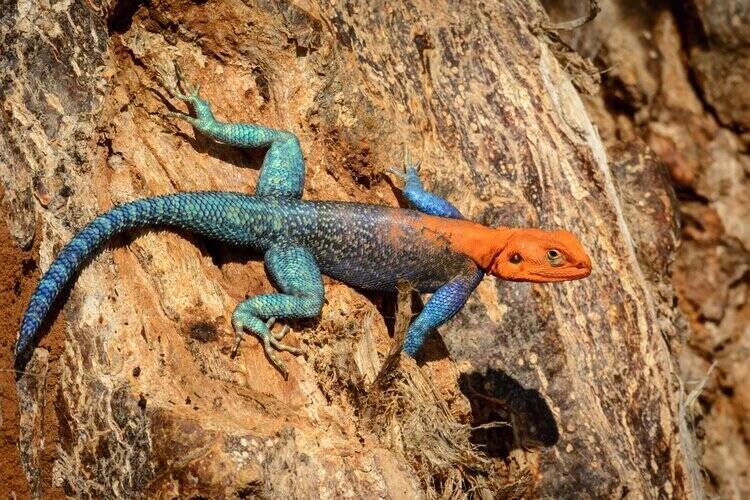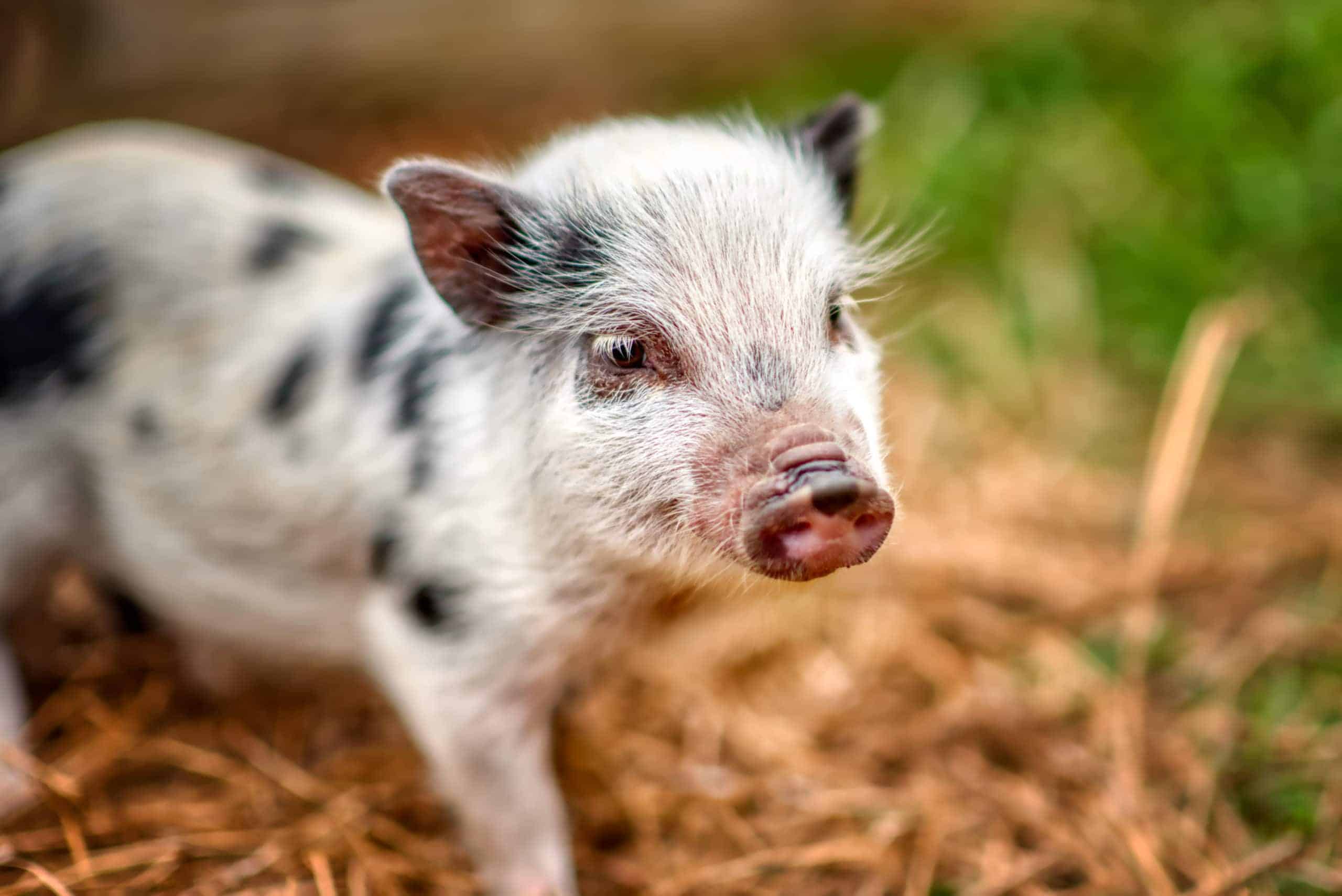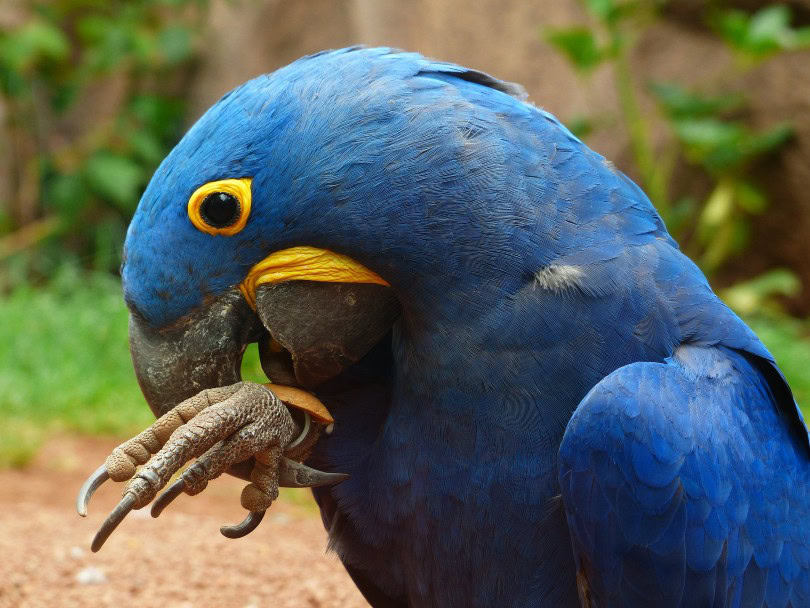Click to Skip Ahead
Native to the sub-Saharan regions of Africa, including Nigeria, Madagascar, and Togo, the African Red-Headed Agama is a lovely little lizard that makes a great pet for novice and intermediate reptile pet owners.
Known for its bright ruby-red head and turquoise-blue body, this agama is a unique animal that could make a fabulous addition to your home. Here is everything that you need to know about the Red-Headed Agama.

Quick Facts About the Red-Headed Agama
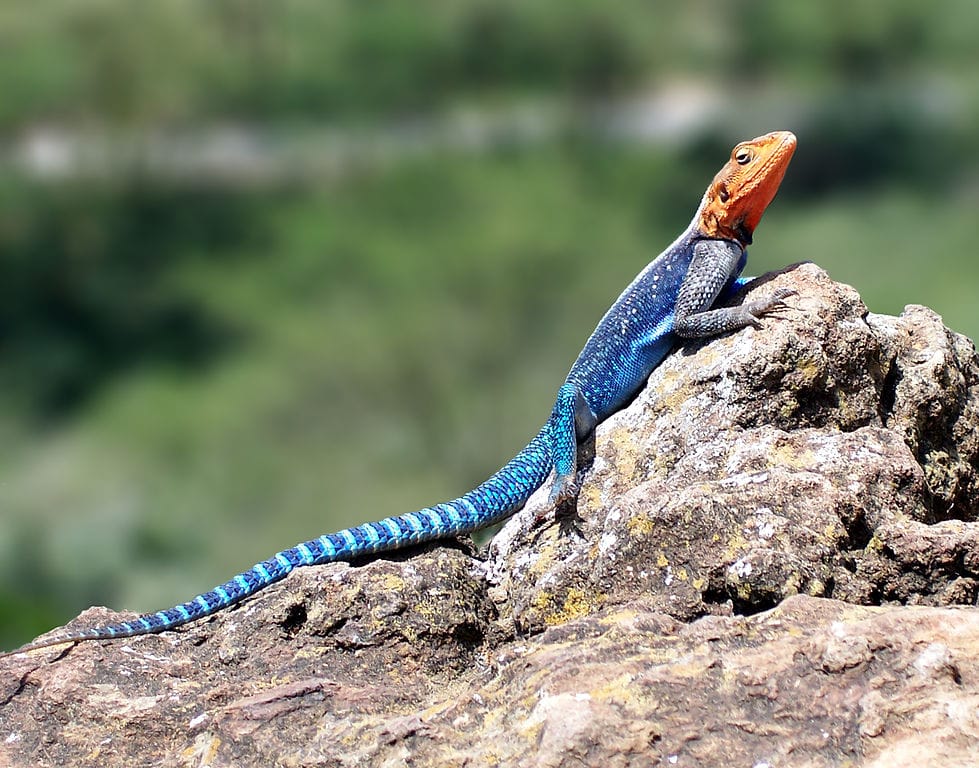
| Species Name: | Agama Agama |
| Common Name: | Red-Headed Agama, African Red-Headed Agama |
| Care Level: | Moderate |
| Lifespan: | 20+ years |
| Adult Size: | 14 inches |
| Diet: | Crickets, worms, frozen pinkie mice |
| Minimum Tank Size: | 2 x 3 feet |
| Temperature & Humidity: | High 80s (degrees Fahrenheit), high humidity |
Do Red-Headed Agamas Make Good Pets?
The Red-Headed Agama makes an excellent pet for beginner and intermediate reptile owners. Those looking for a cuddly pet or folks who are squeamish around insects should not consider getting this lizard. Owning any type of reptile is a huge commitment and responsibility. If you’re not prepared to provide the proper environment for your pet, the Red-Headed Agama may not be right for you.
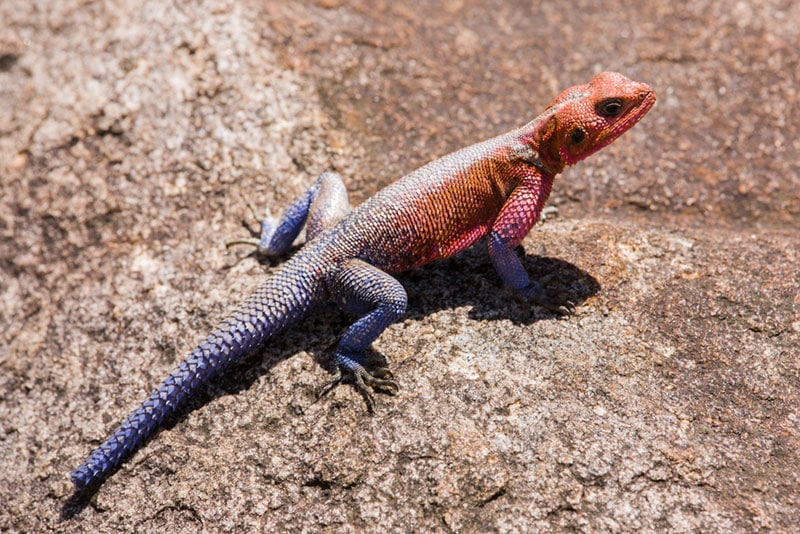
Appearance
The male African Red-Headed Agama has a bright red head and a deep blue body. These colors may intensify during the breeding season. Females and young male Red-Headed Agamas are olive green or brown with cream-colored bellies. This reptile can grow to be about 14 inches long from tip to tail.

How to Take Care of a Red-Headed Agama
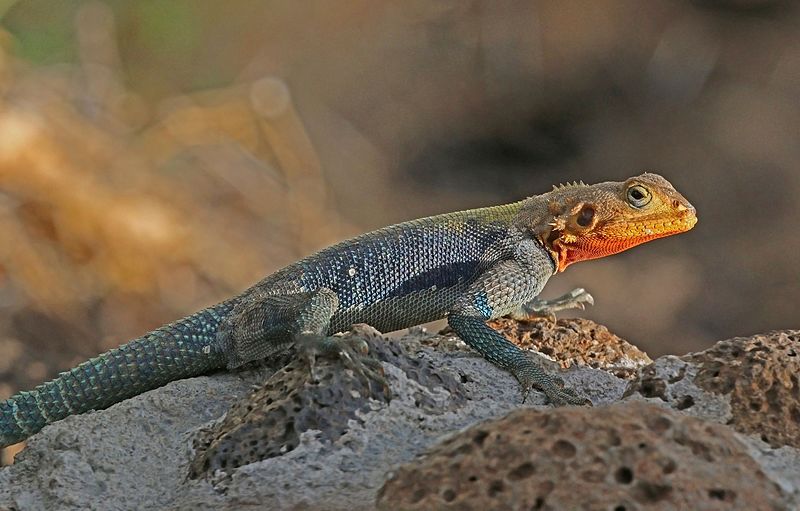
The Red-Headed Agama must be kept in a large enclosure. A 2 x 3-foot tank is the appropriate size for only one lizard, while a 100-gallon tank is good for a pair. You should only keep hatchlings in a 20-gallon tank. When it comes to Red-Headed Agamas, floor space is much more important than height. Never house males together, as they will fight and hurt themselves. Females can be kept in small groups with one male if you plan on breeding your lizards.
Tank
A large, glass tank is a great enclosure for the Red-Headed Agama. Bigger is always better when it comes to the tank size. Provide your lizard with at least three hiding boxes. These hideaways can be as simple as cardboard boxes. You can also purchase clay or rock hides. Also, add fake branches, rocks, and other items to the cage that enable your agama to climb and explore.
Be sure to spot clean the enclosure and change the water daily and remove all uneaten insects in the evening before going to bed.
Lighting
The Red-Headed Agama is exothermic, which means it relies on outside heat sources to stay alive. Your lizard needs several types of lighting, including a basking light, a reptile bulb, and a UVB light. Mimic the natural light of the day as best you can. This means leaving the lizard’s lights on for 12 hours and keeping them off for 12 hours during the evening and nighttime.
Heating (Temperature & Humidity)
The Red-Headed Agama requires ambient temperatures ranging between 83 and 86 degrees Fahrenheit. A heat mat will ensure that the temperatures inside of the enclosure will remain consistent. Avoid using heating rocks, as these can burn your agama. Humidity levels should be kept between 40% and 60%. Keep an eye on the humidity levels by using a hygrometer.
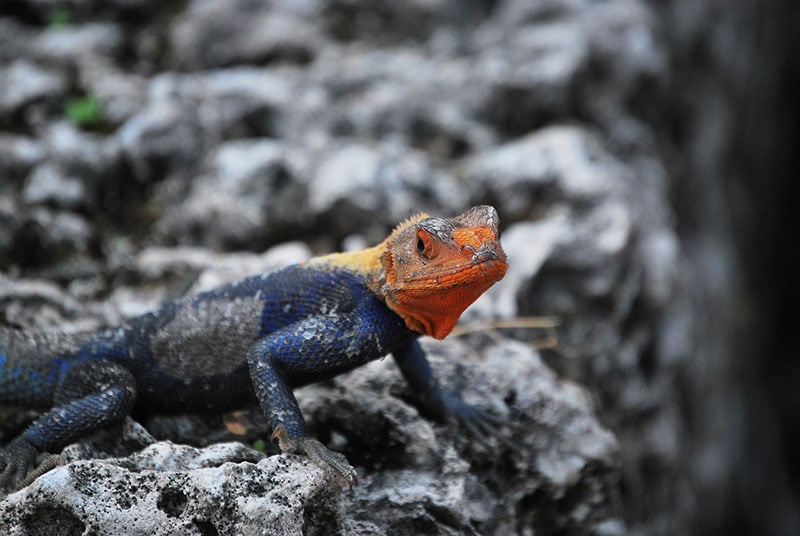
Substrate
Line the bottom of the enclosure with mulch, wood chips, coconut husk, or sand. Fully change out and replace the loose substrate every 4 months. If you decide to use newspaper, replace it when it becomes soiled.
|
Tank Recommendations |
|
| Tank Type | 100-gallon tank for a pair |
| Lighting | UVB, reptile variety, heating bulbs |
| Heating | Heating pad/tape on bottom of enclosure |
| Best Substrate | Newspaper, wood chips, mulch |

Feeding Your Red-Headed Agama
The Red-Headed Agama is a natural carnivore. As such, it thrives on a high-quality diet of proteins. Crickets, mealworms, and superworms all make superb food selections. Feed your lizard about two to three times per week. It will eat about 10 super worms or 15 to 20 crickets. Adults will eat around 40 to 50 mealworms per feeding. You can give your Red-Headed Agama a thawed or frozen pinkie mouse as an occasional treat. Ensure your pet always has access to clean, fresh water.
|
Diet Summary |
|
| Fruits | 0% of diet |
| Insects | 95% of diet |
| Meat | 5% of diet, pinkie mice |
| Supplements Required | N/A |
Keeping Your Red-Headed Agama Healthy
While generally healthy reptiles, the Red-Headed Agama can develop certain health issues later in life, including metabolic bone disease. UVB lighting and vitamin D powder supplements can easily remedy this issue.
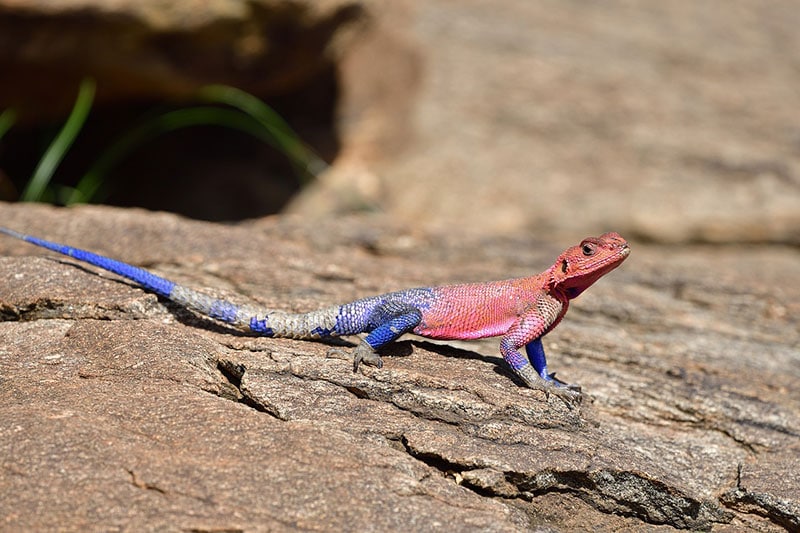
Lifespan
The Red-Headed Agama can live for 20-plus years in captivity. A well-balanced diet and the proper heat and humidity levels are required for a happy and healthy pet.
Breeding
Breeding Red-Headed Agamas is a relatively simple process. It’s important to be ready for their eggs. Keep a male with one or more females. Never house two or more males together. It is best to introduce the two sexes in March or May, when the daylight hours start to get longer.
Put an egg-laying box in the tank when you notice the female is starting to get round with eggs. Ensure that she gets plenty of calcium during this time. Each female Red-Headed Agama can lay up to 20 eggs. Once she lays her eggs, immediately remove them from the enclosure, and put them in an incubator with a constant temperature of about 85 degrees Fahrenheit. The eggs will hatch within 3 months.

Are Red-Headed Agamas Friendly? Our Handling Advice
The Red-Headed Agama is not an aggressive lizard. It may be jumpy when first being handled, though, so it is best to handle your reptile as little as possible to avoid making it stressed.
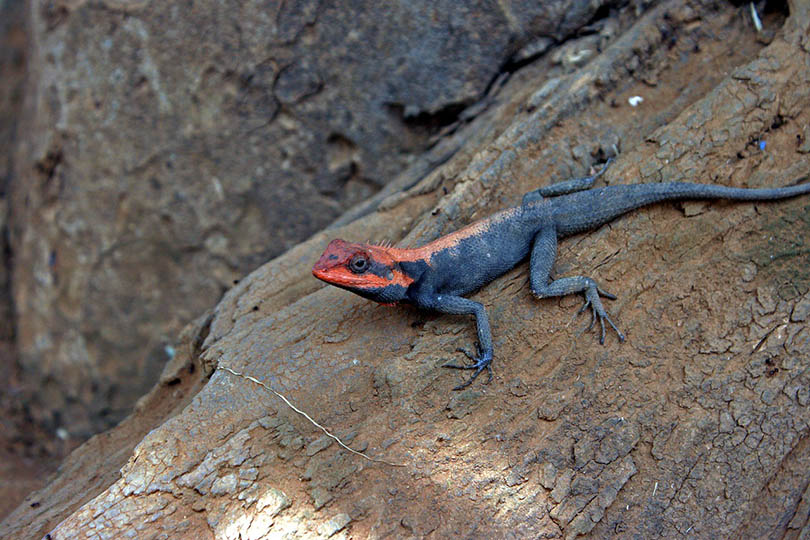
Shedding & Brumation: What to Expect
The Red-Headed Agama generally has an easy time shedding its skin. A healthy lizard will shed its old skin in about a week or two. When your agama is shedding, do not handle it.
How Much Do Red-Headed Agamas Cost?
The Red-Headed Agama is a much more affordable lizard than many other reptiles and will cost around $25. You can buy one at your local pet store, from a reputable reptile breeder, or online.
Red-Headed Agama Pros & Cons
- Docile nature
- Cheaper than many other reptiles
- Simple diet
- Males cannot be housed together
- Needs larger enclosure
- Does not like to be handled a lot


Conclusion
If you’re in the market for a great little lizard, consider getting a Red-Headed Agama today! This reptile needs a spacious cage, high temperature and humidity levels, and plenty of insects to stay healthy and happy. It is a great pet for beginners!
Related Reads:
Featured Image Credit: Roger de la Harpe, Shutterstock
